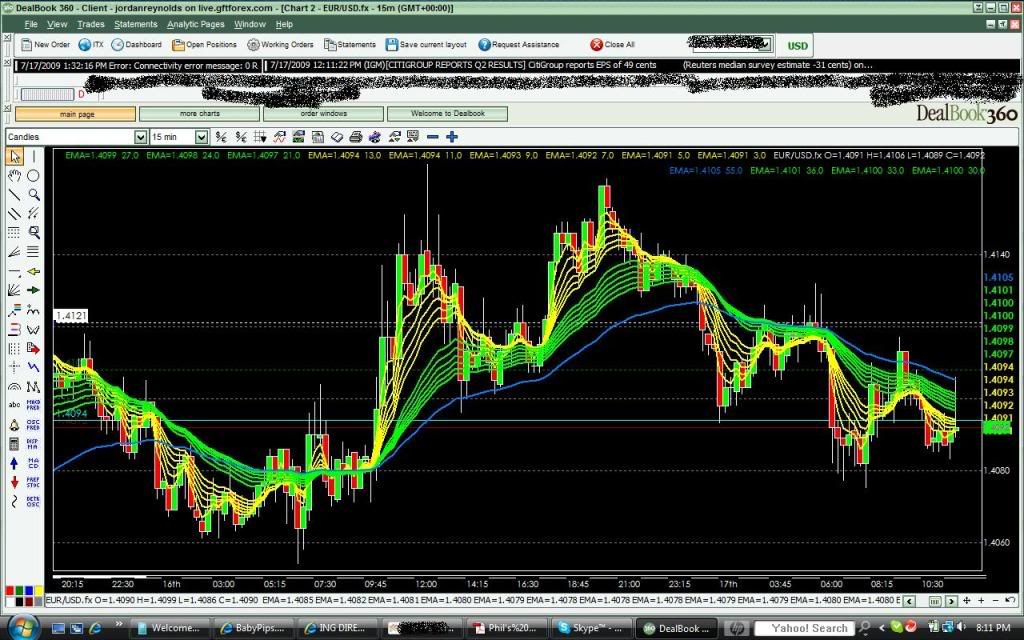Hey there Jordan here,
Back to complain :P. Not really I just want to share something and get some feedback, some reassurance. Three subjects I want to hit.
NUMBER 1 I do believe I’ve found the bulk of what I need to trade forex :). I’ve made a breakthrough, I can finally look back on all that stuff people tell you that you don’t want to hear and say thanks guys, you were looking out. Discipline! It’s a bit shakey but I feel it solidifying as I go.
NUMBER 2 Two weeks ago I started trading with one system, one stoploss and a sort of running take profit. The system looks good but I think its flawed big time, the entries seem to form at the peek of a move so the only way to profit, there would have to be a more substantial move in the same direction after entry. I back tested this system for a month and found pretty good odds but like I said it was only one month. I came up with approximately 564 pips gained and 200 lost. I found this strategy on “forex strategies revealed” it was a scalping strategy I thought looked interesting. I will post a picture it’s called ‘EMA Bands’. I’ve taken almost every opportunity and it seems that with live results i’m just slowly and surely losing my money through my stoploss. Here is the strategy.
This scalping system was sent by Frank Tenerife (Spain).
Thank you Frank! You contribution is greatly appreciated.
Here is the system:
"This is an efficient system of scalping that works in 1 minute up to 1 day all periods and all Currency
Ema 3
Ema 5
Ema 7
Ema 9
Ema 11
Ema 13
Color yellow
Ema 21
Ema 24
Ema 27
Ema 30
Ema 33
Ema 36
color Green
Ema 55 Color Red
Well
The system in The Oanda Forum.
And Way Works is
Buy Or Sell When the Group of Ema`s Yellow Breaks Ema 55
Take Benefit When Yellow Group Touches The Group Green.
If The Yellow group does Pull Back in Ema 55 or In Green Group Buy or sell again
Take Profit 10 Pip in Breaks Ema 55 And take Profit 5 pips In Pull Back
Stop loss 5 Pip 5 Minute Periods
NUMBER 3 I know I shouldn’t think like this but it’s hard not to when it happens so often. On three occasions in the same day, prices moved to my exact stoploss and went back the other way. Honestly I don’t think brokers should be allowed to trade, since they do have access to our orders and all that good stuff ANYWAY, I want someone to tell me I’m just paranoid. Please!
I will be looking for a new strat to trade to start with on sunday, but I’m afraid I might be jumping the gun.
Well thanks for listening, NOW WHERE’s MY FREE FEED BACK?!


